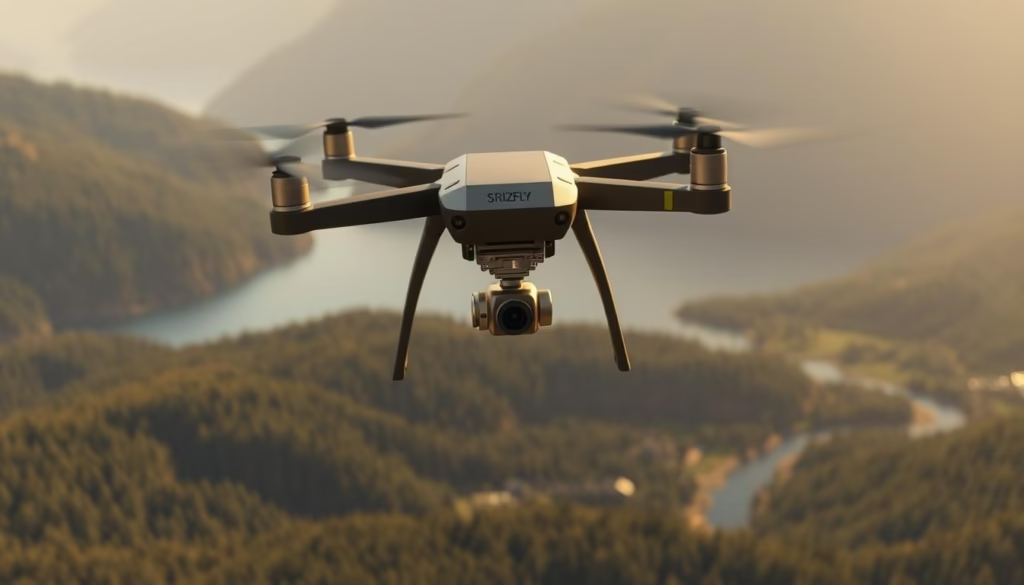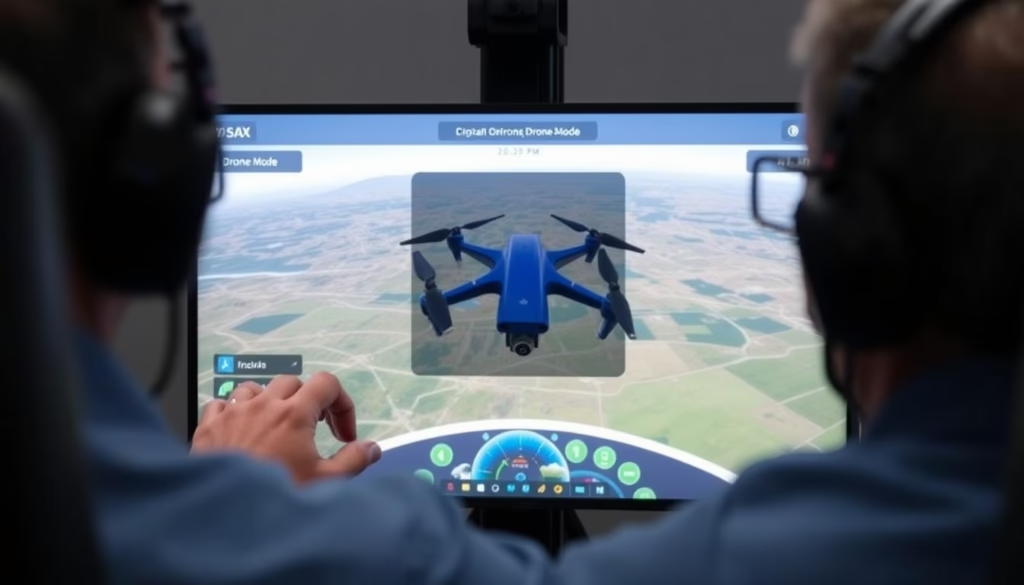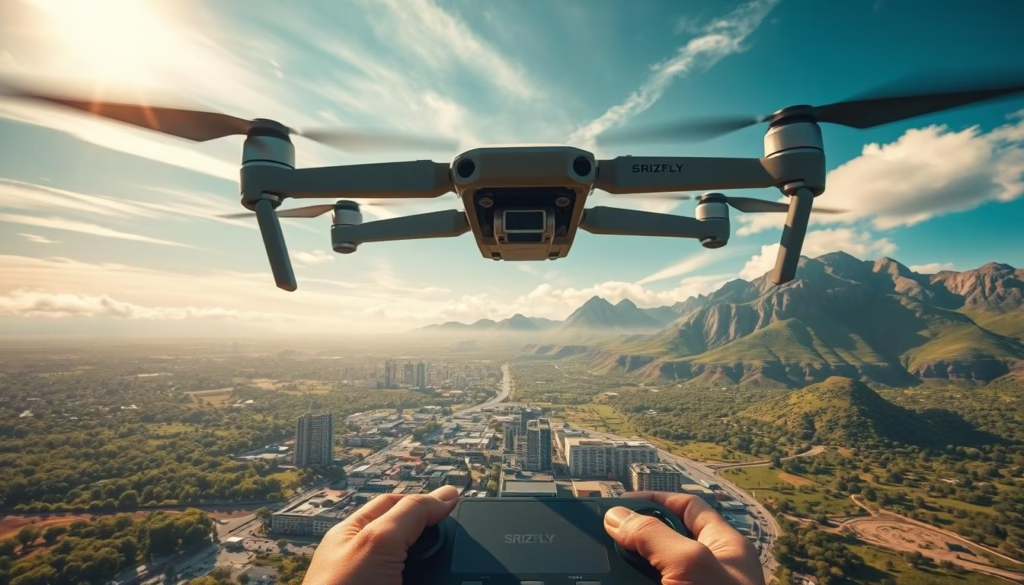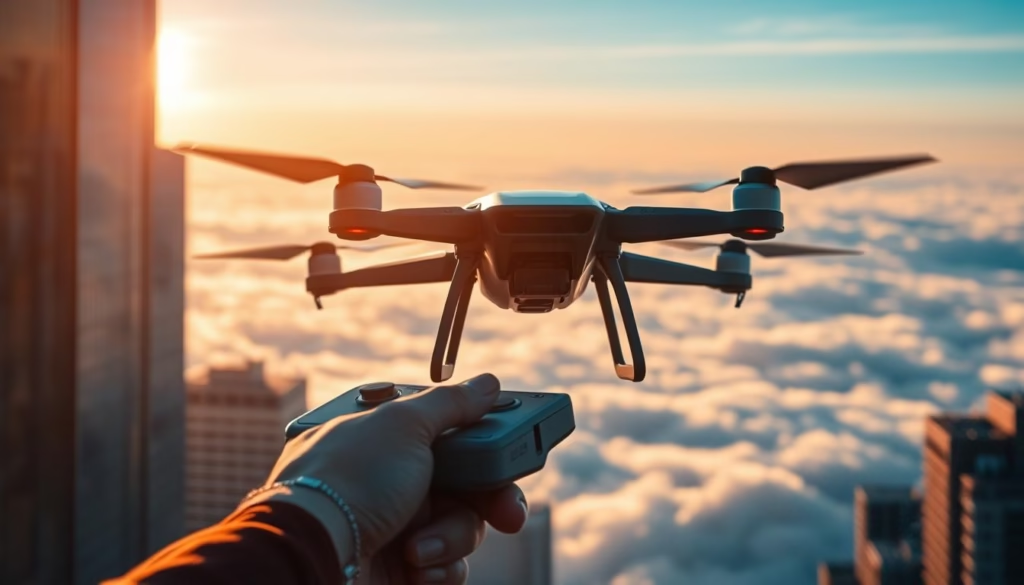Drone technology has revolutionized various industries, from aerial photography to surveying and mapping. To master the skills required for efficient drone operation, training is crucial. Microsoft Flight Simulator offers a sophisticated platform for drone simulation, allowing pilots to hone their skills in a risk-free environment.
The simulator provides a realistic experience, enabling pilots to practice complex maneuvers and camera operations. This advanced training tool is beneficial for both novice and experienced pilots looking to improve their efficiency and technical capabilities. By utilizing this simulator, pilots can reduce the learning curve associated with actual drone operations.
With its high-fidelity environments, the simulator allows for training in various weather conditions and locations, preparing pilots for real-world challenges. This comprehensive training solution is ideal for enhancing piloting skills without the risks associated with actual flight training.
Key Takeaways
- Enhance drone piloting skills in a risk-free environment
- Practice complex maneuvers and camera operations
- Improve efficiency and technical capabilities
- Reduce the learning curve for actual drone operations
- Train in various weather conditions and locations
Understanding Microsoft Flight Simulator Drone Capabilities
Microsoft Flight Simulator offers a comprehensive drone training experience through its advanced simulation features.
We will explore the different aspects of the drone capabilities in Microsoft Flight Simulator.
Built-in Drone Camera vs. FPV Racer Add-on
The Microsoft Flight Simulator includes a built-in Drone Camera feature that allows users to capture stunning images from above.
In addition to the built-in camera, third-party developers like Pilot Experience Sim (PESIM) have created add-ons such as the FPV Racing Drone, available on the Microsoft Marketplace.
Key Benefits for Skill Development
Training in the simulator develops crucial skills, including spatial awareness, hand-eye coordination, and camera framing techniques, that directly transfer to real-world drone operations.
The risk-free environment allows pilots to practice complex maneuvers repeatedly without the financial consequences of crashes or equipment damage.
Getting Started with Drone Mode in MSFS
With Microsoft Flight Simulator, you can easily switch to drone mode and explore new horizons. This feature allows you to experience flight simulation from a completely new perspective.
Accessing the Drone Camera Feature
To access the drone camera in Microsoft Flight Simulator, simply press the Insert key while your aircraft is stationary or on autopilot. Alternatively, you can click on “Camera” on the top toolbar and use the Showcase tab to access drone controls.
Setting Up Your First Flight
Before starting your first drone session, position your aircraft in an interesting location with good visibility and stable weather conditions. This setup provides optimal training conditions. You can use Active Pause to stage the perfect screenshot using the drone camera.
Essential Settings for Beginners
Beginners should configure drone translation speed and rotation speed for better control. These settings determine how quickly your virtual drone moves through the environment. Start with lower settings to get accustomed to the simulation.
The simulator offers multiple ways to access drone controls: through keyboard shortcuts, the Camera option in the top toolbar, or controller inputs. Understanding the difference between Drone Follow Mode and Lock Mode is crucial for effective training.
- Use Drone Follow Mode to keep the drone focused on your aircraft.
- Use Lock Mode to target specific objects in the environment.

Mastering Microsoft Flight Simulator Drone Controls

To fully leverage the capabilities of Microsoft Flight Simulator’s drone mode, understanding its controls is essential. The simulator offers extensive drone camera controls, allowing for a realistic and immersive experience.
Keyboard Command Reference
The keyboard commands in Microsoft Flight Simulator provide precise control over the drone. Key commands include Toggle Depth of Field (F1), Toggle Foreground Blur (F5), and Drone Top Down View (Ctrl + Space). Movement controls (W,A,S,D,R,F) and zoom controls (Num +/-) further enhance the simulation experience.
Controller Setup and Navigation
For those using an Xbox controller, Microsoft Flight Simulator offers an intuitive control scheme that maps drone movements to the analog sticks. This provides a natural feel that closely resembles actual drone remote controllers.
Switching Between Drone and Aircraft Control
Switching between drone and aircraft control is seamless, using the C key on the keyboard with Drone Follow Mode enabled. This feature allows for coordinated piloting and camera operation, a crucial skill for professional drone operators.
Advanced Drone Training Techniques
To take your drone piloting skills to the next level, we will examine the advanced training techniques available in Microsoft Flight Simulator. The simulator, based on technology developed from AirSim in 2017, provides a robust platform for enhancing your drone operation skills.

Precision Flying in Confined Spaces
Advanced drone training in Microsoft Flight Simulator includes precision flying exercises in confined spaces. Practicing navigation between buildings, through narrow passages, and around obstacles will develop the fine motor control needed for challenging real-world environments. This training will help you maintain stable hover positions in varying wind conditions, a fundamental skill for capturing clear images and video footage.
Camera Work and Image Capture
Camera work and image capture techniques can be perfected by experimenting with different depth of field settings, focus points, and exposure values. You can achieve professional-quality drone photography results by mastering these settings. The simulator provides various camera modes and settings for image capture, allowing you to practice and refine your skills.
Simulating Real-World Drone Scenarios
We recommend creating systematic training scenarios that simulate real-world drone applications, such as building inspections, search and rescue operations, or agricultural surveys. Practicing these scenarios will develop specialized skills relevant to your professional goals. You can also experiment with different times of day and weather conditions to understand how these variables affect drone performance and camera settings.
Conclusion: Transferring Simulator Skills to Real-World Applications
As we conclude our exploration of Microsoft Flight Simulator’s drone capabilities, it’s clear that the skills you’ve developed are directly transferable to real-world drone operations. The simulator training you’ve undertaken enhances your control precision, situational awareness, and reaction times, making you a more proficient drone pilot.
Regular practice in the simulator builds muscle memory for keyboard or controller inputs that translate to smoother handling of actual drone remote controls. The camera techniques you’ve mastered, including framing and depth perception, will enhance your ability to capture professional-quality images and footage with real drones.
By combining simulator practice with actual flight time, you can maximize skill development and maintain operational readiness for your drone applications. As drone technology continues to evolve, simulator training remains a constant in professional development programs due to its proven effectiveness.
FAQ
What is the purpose of the drone mode in Microsoft Flight Simulator?
The drone mode is designed to provide a realistic and immersive experience for users to practice and improve their drone operation skills, enhancing their ability to navigate through various environments and scenarios.
Can I use a controller to operate the drone in the simulator?
Yes, you can use a controller to operate the drone, and we provide detailed guidelines on how to set up and navigate using the controller, ensuring a seamless experience.
How does the simulator help in improving drone operation skills?
Our simulator allows you to practice precision flying, camera work, and image capture in a variety of scenarios, including confined spaces, helping you to develop and refine your skills in a controlled environment.
What are the key benefits of using Microsoft Flight Simulator for drone training?
The simulator provides a realistic and immersive experience, allowing you to practice and improve your skills in a safe and controlled environment, reducing the risk of damage or accidents, and improving your overall efficiency.
Can I simulate real-world drone scenarios in the Microsoft Flight simulator?
Yes, our simulator allows you to simulate various real-world scenarios, providing you with a realistic and immersive experience, and helping you to prepare for different situations that you may encounter during actual drone operations.
Is there a free trial available for the Microsoft Flight Simulator drone training?
We offer a 10-day free trial, allowing you to experience the full capabilities of our simulator, and verify its effectiveness in improving your drone operation skills.



